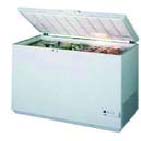The formulations given as examples are selected based on the proper illustration of the freezing process without complicated operations. Therefore, simple formulations with a reduced number of ingredients are used as food products. In the same manner, required equipment is chosen based on a reduced production rate in order to simplify the calculations.
The main ingredients in prototype fruit-based and vegetable-based formulations are as follows:
Fruit-based
formulation
Raspberry, blackberry, sugar syrup (40 percent)
Vegetable-based
formulation
Carrot, green beans, cauliflower, and onions
As mentioned earlier in the section on freezing equipment, production rate is an important consideration in selection of proper equipment for the freezing operation. To simplify the process parameters of the selected prototype formulations, a lower production rate is used. 1 000 kg of frozen product (fruits or vegetables) per month was found suitable in a small-scale operation where usage of a domestic freezer is generally more convenient than an industrial freezer. Several types of domestic freezers are available on the market but the selection was based on economical considerations. Chest freezers are relatively more economical than other types of domestic freezers in terms of energy usage for small-scale operations. Considering the production rate per month and capacity, an optimum domestic freezer, the Zanussi ZCF146 chest freezer with internal volume of 414 lt, was chosen to handle freezing of the fruits and vegetables. This is shown in Figure 20.
Figure 20. Zanussi ZCF146 chest freezer with internal volume of 414 lt.

The equipment required in pre-freezing operations and packaging include proper kitchen utensils for washing and cutting, hot water kettles for blanching, and proper devices for packaging. In general, the highest investment cost in the freezing process is the freezer operation. The utensils are only a small percentage of the initial investment.
Following the freezing operation, frozen products are maintained in frozen storage, which is also an important step in the quality retention of frozen food products. During frozen storage, the amount of ice in the system generally remains constant for any given temperature, where the number of ice crystals decreases due to increase in average crystal size (Blanshard and Franks, 1987). Fluctuations in storage temperature and temperature gradient within the product cause moisture migration, relocating the water within the product and undesirable recristalization which may afect texture and general quality. Therefore, it is important to maintain and monitor the efficiency of frozen storage for retention of high quality within the frozen products.
Cold stores are generally maintained at - 30 °C and the cost of the facility is mostly based on the size of the storage room. The main cost of a storage facility is due to the construction of the building, preparation of the site, and provision of the services. However, public cold stores also provide service for small-scale operations and are relatively less costly than private ones (Johnston et al., 1994).